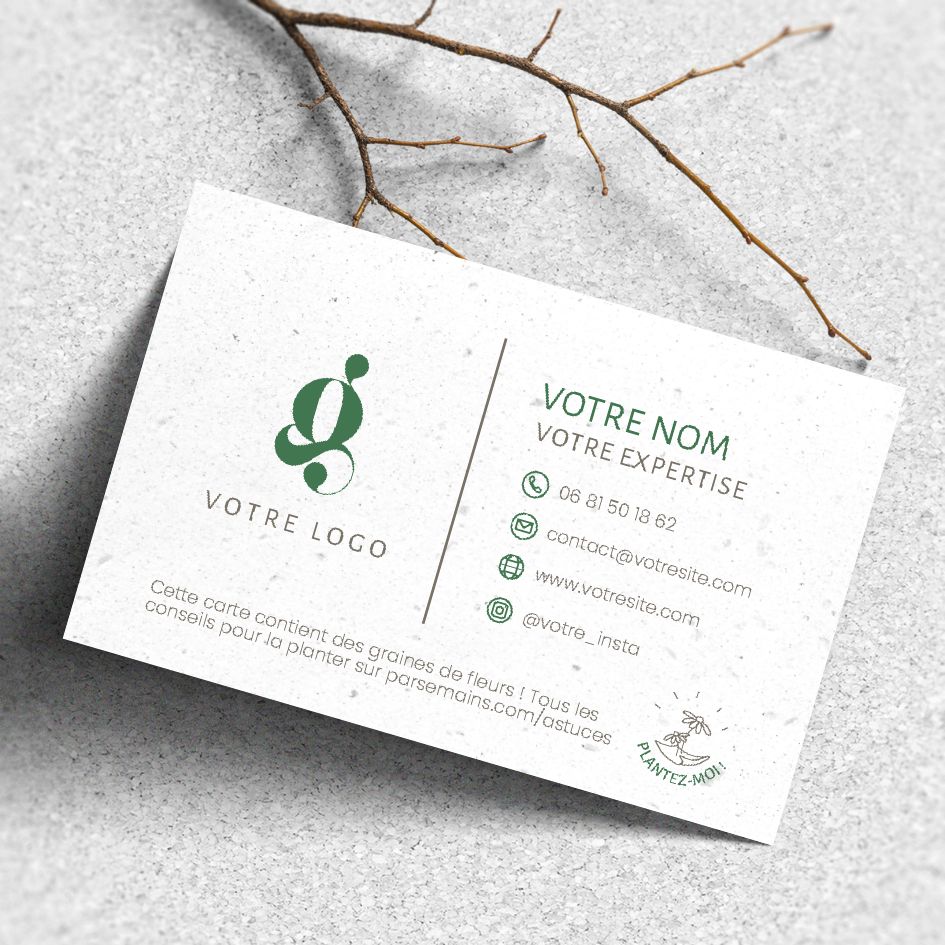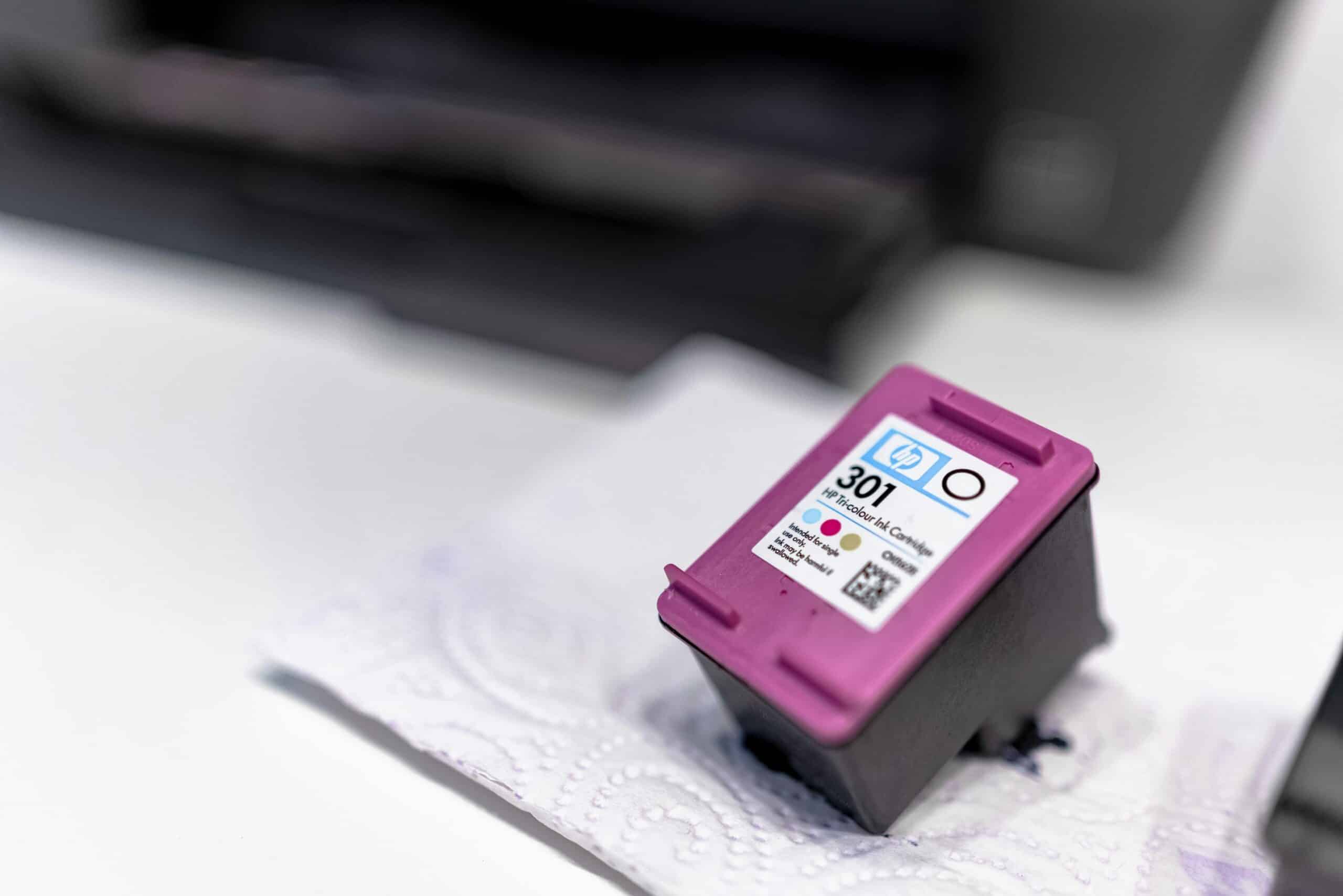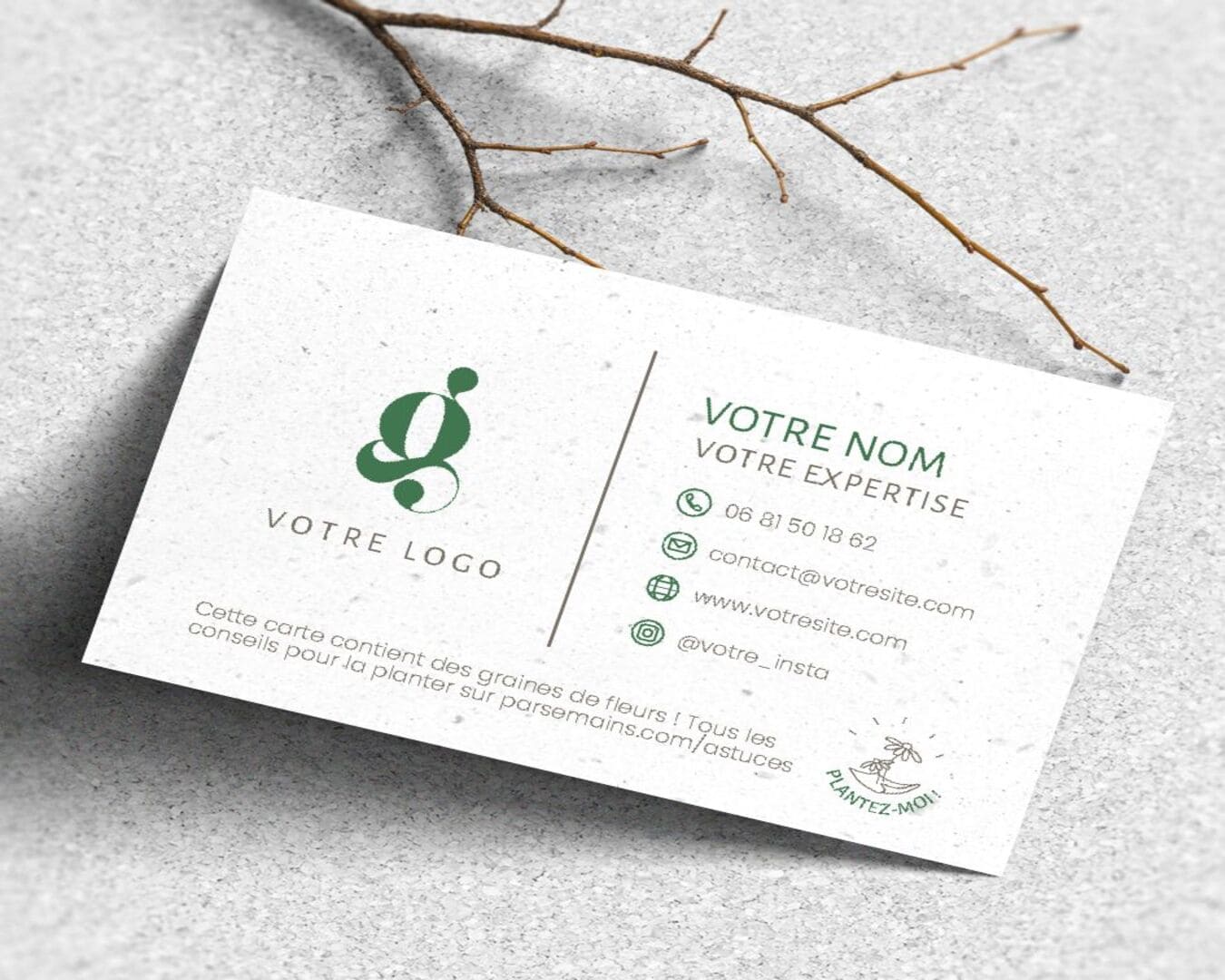Corporate business cards made from seeded paper are much more than just a piece of paper. Imagine if every business card you distributed could be transformed into a flower or a plant, while conveying your company's ecological values. In a world where the ecological footprint of businesses is under increasing scrutiny, creating business cards made from seeded paper may seem like a brilliant idea. But is it really the revolutionary solution it's claimed to be? Let's explore this innovation from different perspectives.
The aesthetic and symbolic appeal of seeded paper corporate business cards

A powerful green marketing tool
Corporate business cards made from seeded paper grab your attention from the first moment you touch them. Their unique texture and promise of future plant life make them an instant conversation piece. As a marketing tool, they send a strong message about your company's commitment to sustainability and the environment. This can be particularly appealing to companies in the green sector or those looking to enhance their green brand image.
A declaration of values
Business cards made from seeded paper don't just look good; they carry a powerful message about your company's values. By choosing this material, you demonstrate a tangible commitment to sustainability and environmental protection. This can strengthen the loyalty of your existing customers and attract new eco-conscious ones. However, some critics may argue that this gesture is more symbolic than practical, and could be a form of greenwashing.
A strong emotional impact
Distributing business cards that can grow into plants creates a lasting emotional impact. Customers and partners will remember you every time they see the plant grow, reinforcing your professional relationship. It also encourages recipients to keep the card rather than throw it away, increasing the chances that they will remember you. However, some sceptics might say that the cost and complexity of producing these cards doesn't justify their impact.
Unique differentiation
In a saturated market where every company is looking to stand out from the crowd, seeded paper corporate business cards offer an opportunity to stand out from the crowd in a significant way. Their unique character and eco-friendly appearance add a personal and innovative touch to your brand image. While traditional business cards can easily be forgotten or thrown away, seeded paper business cards have a second life, creating a deeper and more lasting connection with recipients.
Strengthening customer loyalty
Seeded paper business cards don't just impress at first glance; they also encourage ongoing engagement. By encouraging your customers to plant the cards and watch the plants grow, you create an interactive and memorable experience. This interaction builds customer loyalty, as they associate the plant growth with your brand and your green values. It's a subtle but effective way of keeping your company top of mind with your customers.
The challenges of creating seeded paper corporate business cards

Cost and accessibility
The production cost of seeded paper business cards is significantly higher than that of traditional cards. For small companies or start-ups, this extra cost can be difficult to justify. What's more, the availability of reliable suppliers can vary, making sourcing more complex. It is essential to weigh these costs against the potential benefits in terms of brand image and customer loyalty.
Real vs. perceived durability
Although seeded paper business cards are perceived as environmentally friendly, their production can sometimes contradict this image. The ink used, the manufacturing process and even the origin of the seeds may not always be as sustainable as people think. It's crucial to check the supply chain and ensure that each stage complies with environmental standards. Failure to do so could damage rather than enhance your company's image.
Complex design and printing
Designing business cards from seeded paper requires specific skills and attention to detail. The seeds must be well distributed to ensure successful germination, and the printing must be carried out using environmentally-friendly inks that do not affect the viability of the seeds. This process can be longer and more expensive than traditional card printing, which can pose logistical and financial challenges for some companies.
Seed viability
Not all seeds germinate easily, and viability may vary according to storage and handling conditions. If the cards are exposed to extreme temperatures or humidity before being planted, the seeds may not germinate at all. This factor can create uncertainty about the effectiveness of the card as a sustainable marketing tool. Businesses therefore need to choose seeds that are robust and easily germinated to maximise the positive impact of their business cards.
Waiting management
It's important to manage customer and partner expectations of seeded paper business cards. Although the idea is innovative and attractive, the results are not always guaranteed. Plant growth conditions can vary, and not all cards may turn into beautiful flowers or plants. Clearly communicating planting instructions and care requirements can help to mitigate potential disappointment and ensure a positive experience.
Strategies for maximising the impact of seeded paper corporate business cards

Integrating business cards into an overall marketing strategy
To maximise the impact of seeded paper business cards, it's essential to integrate them into an overall marketing strategy. Use them at green events, trade fairs, and in all communications where your company's environmental commitment is highlighted. This reinforces the message and shows consistency in your actions. Seeded paper business cards should be seen as part of a whole, rather than as an isolated initiative.
Education and awareness
Make sure recipients understand the value and use of seeded paper business cards. Provide clear instructions on how to plant and care for the seeds. You can include a short manual or a link to an explanatory video on your website. This not only shows diligence, but also enhances the user experience, increasing the likelihood that the seeds will be planted and grow successfully.
Personalisation and storytelling
Personalising your business cards with stories or information about the seeds you use can add a memorable touch. For example, if you use local flower seeds, explain why you chose these flowers and how they benefit the local environment. Storytelling creates an emotional connection with the recipient, making the card more meaningful and memorable.
Follow-up and commitment
Don't let seeded paper business cards be the only point of contact. Track interactions with your customers and partners to see if they've planted the cards and what experiences they've had. Encouraging the sharing of photos and testimonials on social networks can also raise the profile of your green initiative and show that your company is following through on its commitments.
Measuring the impact
Finally, measure the impact of your seeded paper business cards to assess their effectiveness. Collect data on brand recognition, customer engagement and conversion rates before and after the introduction of these cards. This will enable you to adjust your marketing strategy and maximise return on investment. By analysing this data, you can determine whether the perceived benefits are translating into tangible results for your business.
Working with ecological partners
Working with other green businesses and organisations can also maximise the impact of your seeded paper business cards. By partnering with environmental groups or local gardening initiatives, you can extend the reach of your message and reinforce your commitment to sustainability. These collaborations can also offer co-branding and cross-marketing opportunities, amplifying the effect of your green campaign.
Using social media to amplify the message
Social media is a powerful tool for amplifying the sustainability message conveyed by your seeded paper business cards. Encourage your customers and partners to share their planting experiences on social networks, using hashtags specific to your campaign. This creates an online community around your green initiative and increases the visibility of your brand. By organising competitions or planting challenges, you can also encourage greater participation and commitment.
Corporate business cards made from seeded paper are a fascinating innovation that combine aesthetics, durability and emotional impact. Although they present challenges in terms of cost, design and sustainability, the potential benefits in terms of green marketing and customer loyalty are significant. By integrating these cards into an overall marketing strategy, educating recipients and measuring their impact, companies can really leverage this initiative to strengthen their brand image and environmental commitment. So, are you ready to make your professional network flourish?


